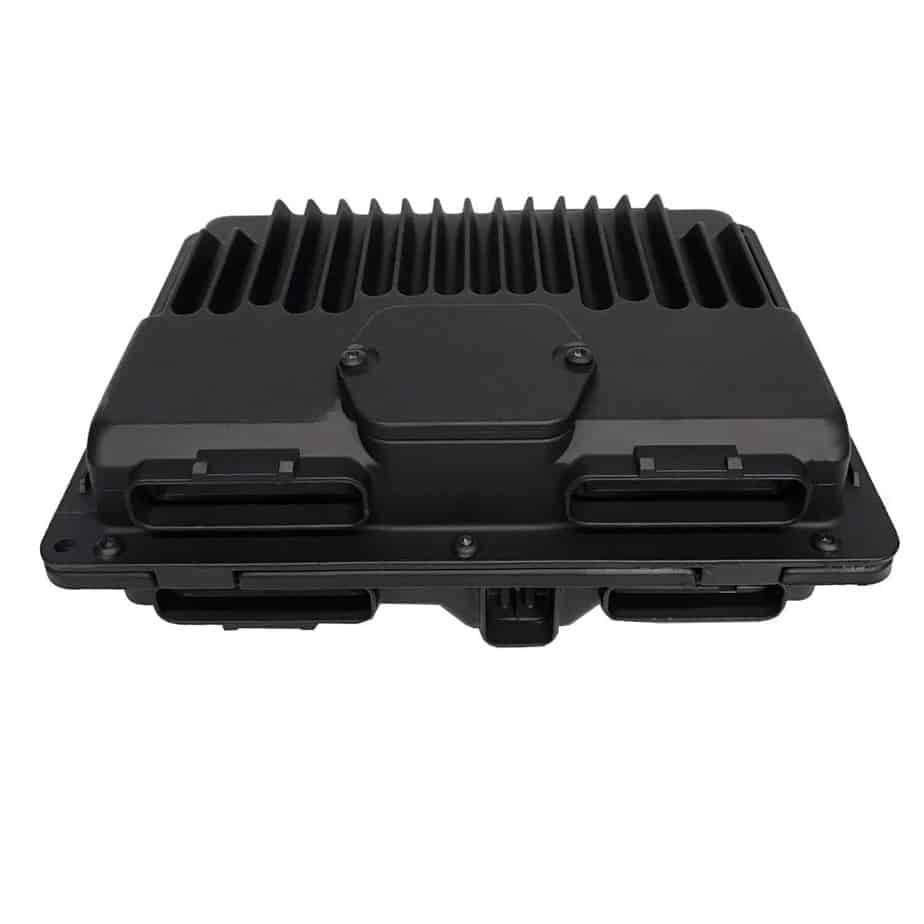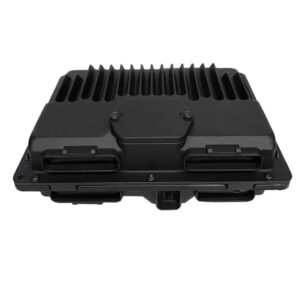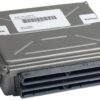Restore Peak Performance to Your Workhorse Truck
As a technician with over two decades of experience under the hood, I’ve seen firsthand how a failing Powertrain Control Module (PCM) can bring even the toughest trucks to their knees. If your 1998-1999 Chevrolet 3500 Pickup is suffering from erratic behavior, poor fuel economy, or won’t start reliably, the issue often points directly to this critical component. The PCM is the electronic brain of your truck, managing everything from fuel injection and spark timing to transmission shift points. When it falters, the symptoms can be frustrating and difficult to diagnose.
This isn’t just a replacement part; it’s a complete solution. We take a quality, tested PCM and flash it with the latest official GM software updates, specifically calibrated to your vehicle’s unique Vehicle Identification Number (VIN). This means you get a module that’s ready to install right out of the box, eliminating the need for expensive dealership programming or specialized scan tools. By providing us with your VIN at checkout, you ensure a seamless, plug-and-play experience that gets your truck running smoothly again.
From the Diagnostic Bay
I remember a 1999 GMC Suburban that came into the shop with a complaint of intermittent stalling and harsh shifting. The owner had already replaced the fuel pump and several sensors with no luck. The check engine light was off, making it a real head-scratcher. After hooking up our professional scanner and monitoring live data, we noticed the PCM was randomly dropping communication. It wasn’t setting a hard code like P0601, but the data stream was erratic. We swapped in a pre-programmed PCM, performed the security relearn, and the truck ran perfectly. It’s a classic example of how a failing computer can mimic a dozen other mechanical problems, and why a reliable, correctly programmed module is the only true fix.
Is Your Truck Showing These Symptoms?
A faulty PCM can manifest in numerous ways. If you’re noticing any of the following, it’s a strong indicator that the brain of your engine needs attention. A new 1998-1999 Chevy 3500 PCM can be the solution.
- ✔ Check Engine Light is illuminated with codes like P0601, P0605, or other internal module errors.
- ✔ The engine cranks but refuses to start.
- ✔ Unexplained drops in fuel efficiency.
- ✔ Harsh or erratic automatic transmission shifting.
- ✔ The engine stalls intermittently, especially when warm.
- ✔ Communication errors with diagnostic scan tools.
A Straightforward Guide to Your PCM Swap
Installing your new PCM is a manageable job for a confident DIYer. Following these steps will ensure a smooth process. Remember, on these GM vehicles, a security relearn procedure is often required after installation.
- Safety First: Disconnect the negative terminal from your vehicle’s battery to prevent any electrical shorts.
- Locate the PCM: On most of these trucks and vans, the PCM is located in the engine compartment, typically on the driver’s side inner fender or near the battery.
- Disconnect the Harnesses: Carefully unclip and remove the electrical connectors from the old module. These connectors have locking tabs that must be released before they can be pulled free.
- Remove the Old Module: Unbolt the PCM from its mounting bracket and remove it from the vehicle.
- Install the New PCM: Mount your new, pre-programmed module in the same location. Securely reconnect the electrical harnesses, ensuring they click into place.
- Reconnect the Battery: Reattach the negative battery terminal.
- Perform Security Relearn: This is a critical step. Attempt to start the engine; it will likely start and then stall. Leave the key in the ‘ON’ position for 10-15 minutes, until the ‘Security’ light on the dash stops flashing or turns off. Turn the key off for 10 seconds, then start the engine. It should now run correctly.
Verified Vehicle Compatibility List
This module, identified by part number 16250279 (and interchangeable with 09366810, 09355699), is a direct-fit replacement for a wide range of GM vehicles. Please verify your part number and application from the list below to ensure proper fitment. This is the correct 1998-1999 Chevy 3500 PCM and also fits:
GMC 3500 PICKUP 98-99 (Gasoline, LH front engine compartment)
CADILLAC ESCALADE 99 (LH front engine compartment)
CHEVROLET/GMC 1500 & 2500 PICKUP 98-99 (Gasoline engines)
CHEVROLET/GMC SUBURBAN 1500 & 2500 98-99 (Gasoline)
CHEVROLET TAHOE / GMC YUKON 98-99 (Gasoline)
CHEVROLET ASTRO / GMC SAFARI 98-99 (4.3L, LH front by battery)
CHEVROLET EXPRESS / GMC SAVANA 1500/2500/3500 98 (Gasoline)
CHEVROLET S10 / GMC SONOMA / JIMMY S15 / BLAZER S10 98 (4.3L, w/o opt ZN4)
OLDSMOBILE BRAVADA 98 (4.3L, w/o opt ZN4)
ISUZU HOMBRE 98 (4.3L, w/o opt ZN4)
And other models sharing part number 16250279, 16258815, 09366810, or 09355699. Please match your service ID number.
Why do you need my VIN?
Why do you need my VIN?
Your VIN (Vehicle Identification Number) is essential for programming. It allows us to load the exact, correct software calibration from GM for your truck’s specific engine, transmission, and options. This ensures perfect compatibility and function without any additional programming required on your end.
Is this a simple plug-and-play installation?
Yes, for the most part. The module itself is physically plug-and-play. However, after installation, you will need to perform a simple ‘Security Relearn Procedure’ which pairs the new PCM to your vehicle’s anti-theft system. This procedure requires no tools and typically takes about 10-15 minutes. We include instructions for this process.
Will this fix my transmission shifting problems?
In many cases, yes. The PCM controls the electronic solenoids in the transmission that manage shifting. If your transmission issues are caused by faulty signals from the computer, this programmed module will resolve them. However, it will not fix internal mechanical failures within the transmission itself.
How do I find the part number on my old PCM?
The part number is printed on a sticker on the case of your existing PCM. On these GM trucks, it’s typically a prominent 8-digit number. You will need to locate and remove the module to view this sticker. Matching the number (e.g., 16250279) is the best way to confirm compatibility.



